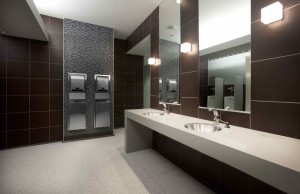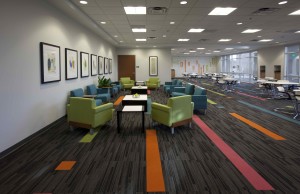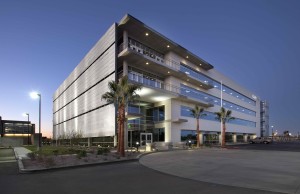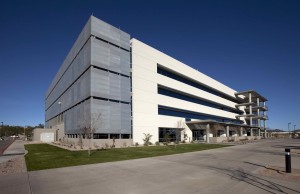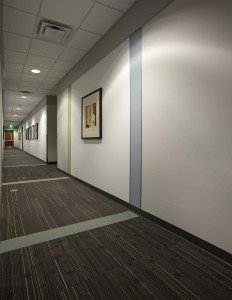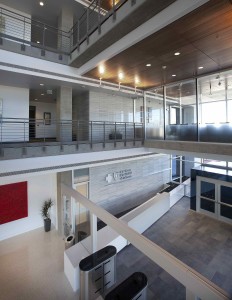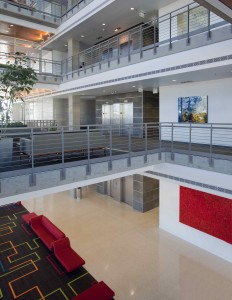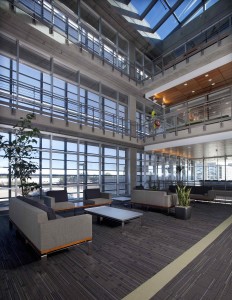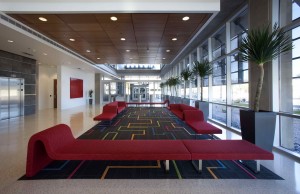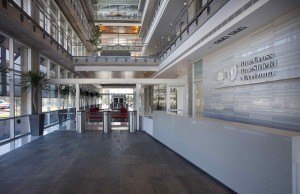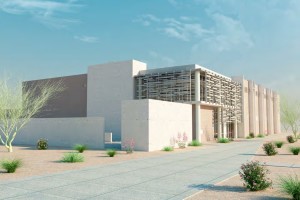Project Description:
Townley Campus
Client: Blue Cross Blue Shield of Arizona
20 Acre Campus Development
Phase One:
4 Story, 100,000 sqft Office Building, B-Occupancy, Post Tension Slab, Type III-A Construction
2 Story, 50,0000 sqft Data Center, Tier-III, N+1 Redundancy, 15,000 sqft of raised floor, 6kw per sqft for raised floor
Architect of Record:
Team:
Tracy Lauer, Project Architect
Nathan Leblang, Project Architect
Amy Kim, Designer, Project Manager Office Building
Willard Williams, Designer, Team BIM leader, Project Manger Data Center
Neil Terry, AIA, Principal-in-Charge
This project was completed in 2009.
While working with Orcutt|Winslow I was apart of a team of 2 architects and 2 project managers. This project represented a distinct evolution in the way projects were designed and constructed for the Orcutt|Winslow. We used Teamwork, a unique technology that allows for multiple people to work within the same file, in real time, for first time in the firm’s history. I had experimented with it as a freelance designer in the years before but had little exposure to LAN connected Teamwork’d file. This type of workflow allowed for all members of the team to be highly productive and increase their synergy as it related to design, and production of the required documentation and visualization. We were also able introduce quick rendering methods using Cinema 4D through this Teamwork connection. This not only allowed us to be efficient in the production of the required documentation, but allowed us to change, and alter the designs very quickly without retracing our steps. This implementation and execution of Teamwork was a suggestion that I had brought to the team leaders, and studio leaders. It lead to nearly all projects within the firm to be exclusively done using Teamwork. Teamwork essential component to firms of any size. With the advent of Teamwork 2.0 teams are now able to work remotely with ease. This in-turn allows for teams to be spread across the globe, tied to a single file, and very low barriers to entry.
Another important piece to the success of this multi-million dollar project was the implementation of a technique called Integrated Project Delivery (IDP). With this technique we were able to interview contractors just after we completed the Design Development phase of the project. There are numerous benefits to this technique for any size or type of project.
Some of the inherit benefits are bringing experts in construction into the design process early enough to avoid potential complex or expensive design issues that would only later expose themselves long after the Construction Documents have been prepared and/or permitted. Another benefit is controlling the schedule. This can mean a few different things; one is that long lead time items can be authorized and fabricated, just in time, to avoid delays which can come from sequencing issues based on the in ability of one item to be ready in time for another set of events to take place. Another scheduling related issue that IDP can help avoid is insuring that the entire schedule is understood and inline with the clients and teams goals. This method significantly reduces scope creep, cost increases due to schedule delays, and cost increases due to constructibility issues to name a few.
After witnessing the benefits both from IDP and Teamwork I have always suggested that my clients and design teams to explore working in this method from day one.
